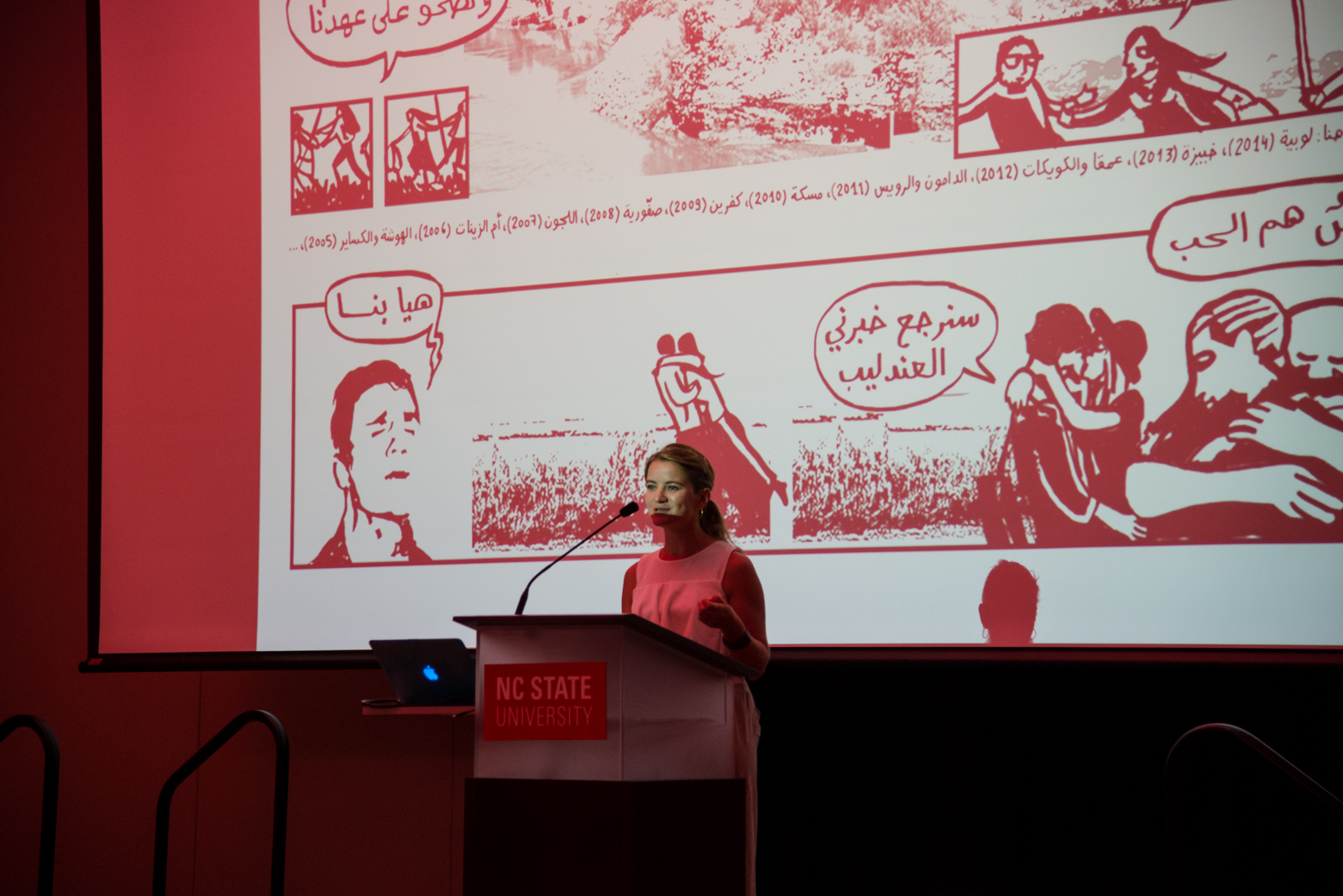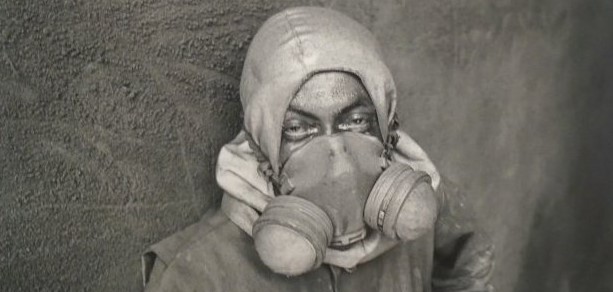Interview with Dr. Lena Merhej: Beirut-based illustrator and activist
This interview was conducted by Renée Michelle Ragin, a PhD student in Literature at Duke University where her research focuses on the negotiation of national identity in post-conflict Middle Eastern and Latin American states. Her previous articles focus on refugees and oral history and war, memory, and archiving.

Lena Merhej is the co-founder of Samandal, a Beirut-based volunteer collective of animators, illustrators and graphic designers using the genre of comic art to explore art, society and politics.
Since 2006, they have published the work of over 300 artists from the Middle East and its diaspora. From 2010 – 2015, Samandal battled a lawsuit from the Lebanese government, from which they are still recovering.
In September 2016, Lena was the Khayrallah Center’s first artist-in-residence. Duke PhD candidate, Renee Michelle Ragin, sat down to interview Lena in Beirut shortly thereafter.
On naming their collective “Samandal”
Lena Merhej: [Samandal editor] Omar Khouri came up with the name. He was driving in the north of Lebanon. The sea was on the right and the mountains were on the left. As he was driving, he saw something shining on the street. He stopped. It was a salamander. He thought, “maybe that’s a good idea: an amphibian.” Comics are in between the word and the image, between high art and low art, between experiment and tradition.
The impact of the Lebanese government’s 2010 lawsuit against Samandal*
In 2010, the government charged Samandal with “inciting sectarian strife,” “denigrating [Christian] religion,” “publishing false news,” and “defamation and slander” through their publications. Lena speaks about how this has impacted their work:
LM: I cannot separate the politics from the social at this point, especially in Lebanon. … It’s not only the government or the state whose reaction I am afraid of: it’s also the people. We are speaking to our society and we want to push to create debate and discussion, but at the same time we don’t want to insult.
After the lawsuit, the first thing I did was hold a symposium on comics and censorship so that we could define what we can and cannot say, to understand the law. Now, [ironically] the minister that filed the lawsuit does not remember who we are, and doesn’t even remember filing the suit.

On tackling the theme of sexuality in the latest issue, Geographie
LM: Because of the lawsuit, I had to adjust the theme, LGBT issues and sexuality, by buffering it with the concepts of youth and poetry. I held a symposium on censorship, connected artists with organizations [that work on] sexuality, and decided to publish this edition in France.
The editing process starts with choosing artists: who do you think could work on this subject? I started with a group that I knew already had experience. I wanted them to think about the possibilities of what you can draw and publish in Lebanon, and then to think about what was needed. A lot of the Lebanese artists wanted to focus on the image when it comes to treating sexuality, whereas a lot of the artists abroad were more interested in the letters and the words rather than visualization, which I thought was really interesting. The Lebanese artists answered the question of what was needed by expressing a desire to depict naked bodies. That same year, an exhibition was held at AUB called “The Arab Nude: The Artist as Awakener” (https://www.aub.edu.lb/art_galleries/current/Pages/arab-nude.aspx).
On bridging the gap between “high” and “low” art
LM: With “Youth, Sexuality and Poetry” I was moving into narrative poetry: what is poetry in the visual? Graphic illustration is narrative and visual at the same time; it opens up space for stories to unfold. The exhibition included works of the 28 Samandal artists as well as outside works from 18 university students. We wanted to place comics in a contemporary art gallery to raise the form to the level of “art.” I made sure to make this exhibition space very clean, everything was nicely framed – I wanted to push the whole thing to a higher level. Comic art is the only space that is not interested in catching up to what else is happening around you. I wanted the audience to know I’m serious – I’m not just “doing porn”!

On the relationship between contemporary Middle Eastern Art and the “Arab Spring”
We asked Lena how she would address a common misperception in the U.S. that contemporary Arab art was reinvigorated with the start of Arab Spring in 2011.
LM: I would correct the timeline of Arab Spring to say that it began in 2006. In 2006, I had a meeting with a couple in Egypt – a Palestinian, married to an Iraqi-Lebanese – who wanted to establish computer camps that teach students new technologies for expression. We called it “Arab Digital Expression Camps” [which has since become “ADEF” https://arabdigitalexpression.org/).
When Arab Spring happened, everyone was asking us to react … as if whatever was written before had not been voiced. People were interested in hearing about protests, but most of the comics are about protest: accusing the police state, bringing out the effect of the [Lebanese Civil] war … you had it all sprouting in the comics. But Arab Spring made artists feel pressure to respond because [of the sudden proliferation of] workshops and funding. It became artificial.
On portraying the Lebanese Civil War
LM: For us who were kids during the war, our concern is to archive the memories that we have. Put them down on paper. Our relation with war, though, was that of a child. It’s easier to tell. There is no taboo. On the contrary, there is a kind of freedom – it’s more like a catharsis.
War was our whole life [as children], we can’t go outside of it. Whatever you would tell of your past would be of war, it’s reality. [By contrast, post-war] peace was unreal. What is peace? How do you relate to it? How do you explain things that are continuing while we are “at peace”? In war, it’s not like there are bombs above your head all the time, there are times when you are at peace. So, the generation who lived the war during childhood because we are still at war. But for the artists who are a little bit younger, their war narrative is more allegorical, symbolic.
On the future of Samandal
LM: Our new team members are thinking of moving Samandal from an organization to a publishing house. We will always have the magazine as a space for experimental work, but we want a structure to support artists, something that works better in the long run.
*As a result of the heavy fines from the lawsuit, the collective has established a fundraising campaign to ensure that they can continue operating as a volunteer-based non-profit: https://www.indiegogo.com/projects/the-people-vs-samandal-comics–2#/
- Categories:


